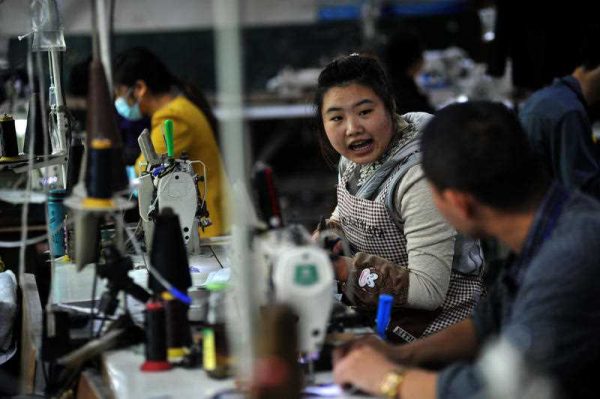There’s nothing very normal about the so called ‘new normal’ of Chinese growth. Growth has tanked from 10 to 7 per cent and is now heading towards 6 per cent. Because bureaucrats and business got the future wrong, the heavy industrial sector is plagued by over-capacity and demands wholesale renovation. Steelmaking is no longer the future of Chinese growth. The driver of economic growth is consumption. The fastest growth in household consumption is coming from the demand for services not for goods. This is what a top Chinese official described recently as the post-industrial society. Not the case quite yet perhaps, reading from the air quality in Beijing this week, but that’s the direction things are headed.
Millions of the new middle class in China are spending up on going out and travelling. The anti-corruption drive might have knocked the stuffing out of high class dining in the capital but it’s still difficult to get a restaurant booking as those who earned their money honestly are going out on the town. The shopping centres of Tokyo, London and Sydney are bustling with millions of Chinese tourists a year now, buying up on quality and fashion.
By 2009, China was already on the cusp of middle income, measured by international standards. Today it enjoys average incomes of around US$8,000 a head. In Shanghai average income is more than double that so there are still great differences in per capita income across the country.
That’s, of course, why there remains a continuing opportunity for productivity growth. China needs every bit of productivity growth it can eke out to achieve the comfortable living standards that are now the official ambition of the Chinese people in 2025. The working age population is shrinking, there’s no longer much in the way of the so-called demographic dividend to keep the growth rate churning along even at 6 per cent. The dependency ratio (the share of the non-working to working population) is rising and the effects of the now-defunct one-child policy will see it rise spectacularly in the coming decade.
With a shrinking workforce and lower investment the only way to lift income is to lift productivity — or the amount of output produced per unit of labour and other inputs. New technology can help do that. Re-deploying labour from low productivity (low income per head jobs) in the provinces gets you there too. And that, of course, has been a major driver of Chinese growth in the decades since Chinese migrants were allowed to move on scale into higher paid, higher productivity urban jobs. Over 30 per cent of growth in China over the past three or four decades came from total factor productivity growth.That has to rise to achieve the income levels to which China now aspires over the coming decade. The income differences across the country may be a massive problem. But, as the old Chinese aphorism goes, every problem presents its opportunity. A policy priority must therefore be to facilitate this movement of people into higher productivity urban employment. That is what’s needed on the supply side.
In this week’s lead essay by China’s top economic demographer, Fang Cai, and his colleague Meiyan Wang, argue that there’s also, of course, a demand side to this story. They argue that, the release of future consumption potential requires the Chinese government to focus on migrant workers who are a major driver of structural change, urbanisation and productivity growth in the Chinese economy.
‘The number of rural–urban migrants and migrant incomes per capita have increased rapidly over the past decade,’ explain Cai and Wang, ‘resulting in a huge total migrant income pool. This new generation of migrants has a higher propensity to consume out of increments to their incomes than the previous generation of migrants, making them an emerging consumer group whose impact on the shape of the new normal could be significant’.
Yet migrant household consumption is suppressed by a number of factors. Migrant workers are disadvantaged in employment conditions, income levels, and access to social welfare and public services compared to urban workers. They have uncertain job security, they earn lower incomes and they have fewer social security and public service entitlements. These are things that influence consumption positively, and dealing with them would lift migrant household welfare and consumption at the same time.
Cai and Wang have actually measured the differences in consumption patterns between migrant and urban households. They find that the main difference is in consumption of facilities and services consumption (a considerable 37.6 per cent) and spending on education (a whopping 47.9 per cent). If pension coverage were extended to migrant workers, these consumption comparisons demonstrate that there would be a significant lift in overall household consumption, accelerating the growing importance of services in the economy.
Removing the uncertainties for migrant labour around administration of the hukou system is not only important to lifting the productivity of the Chinese economy; as Cai and Wang conclude, it’s also important to boosting China’s consumption potential.
Peter Drysdale is the editor of the East Asia Forum.

